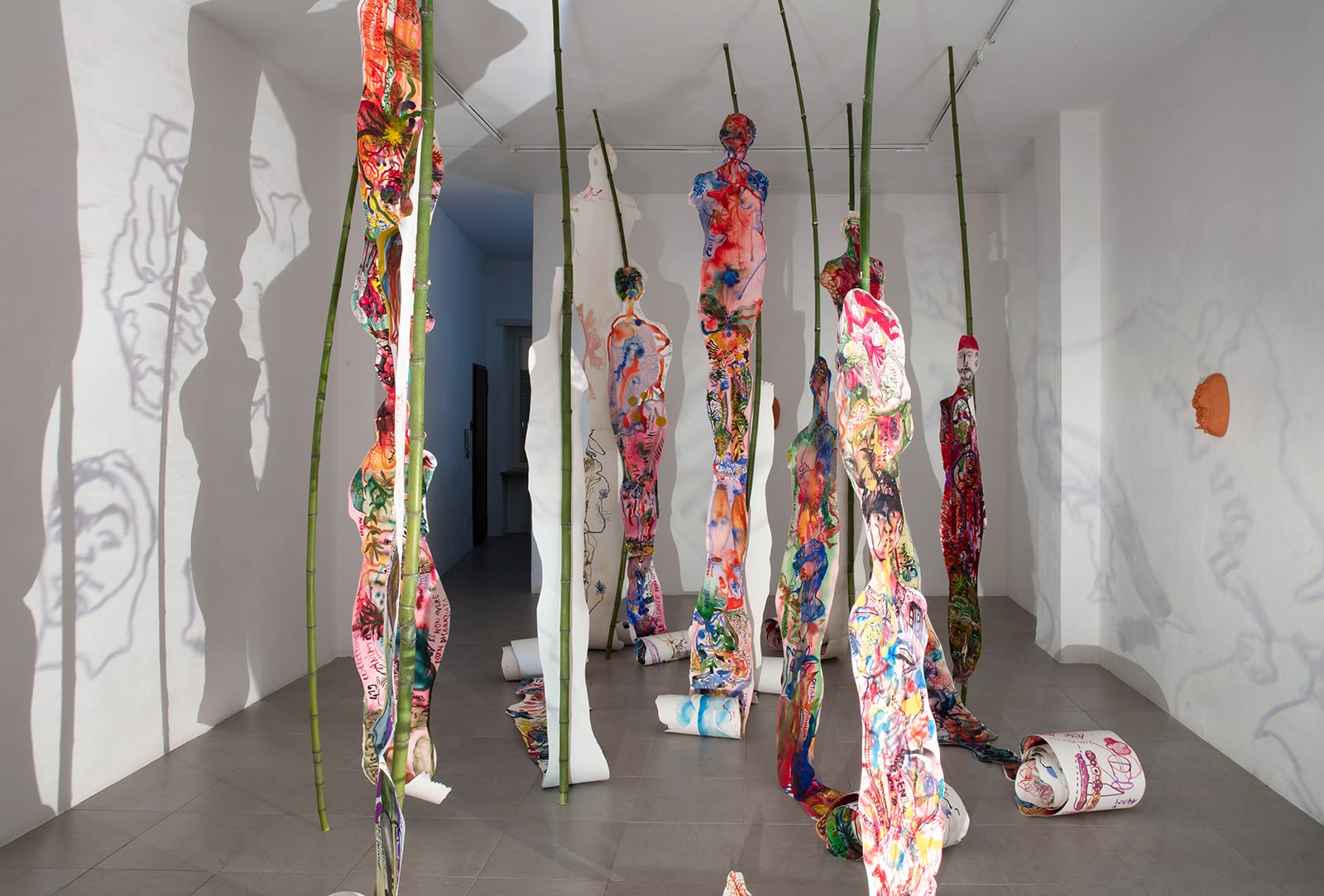 Installation view
Installation view
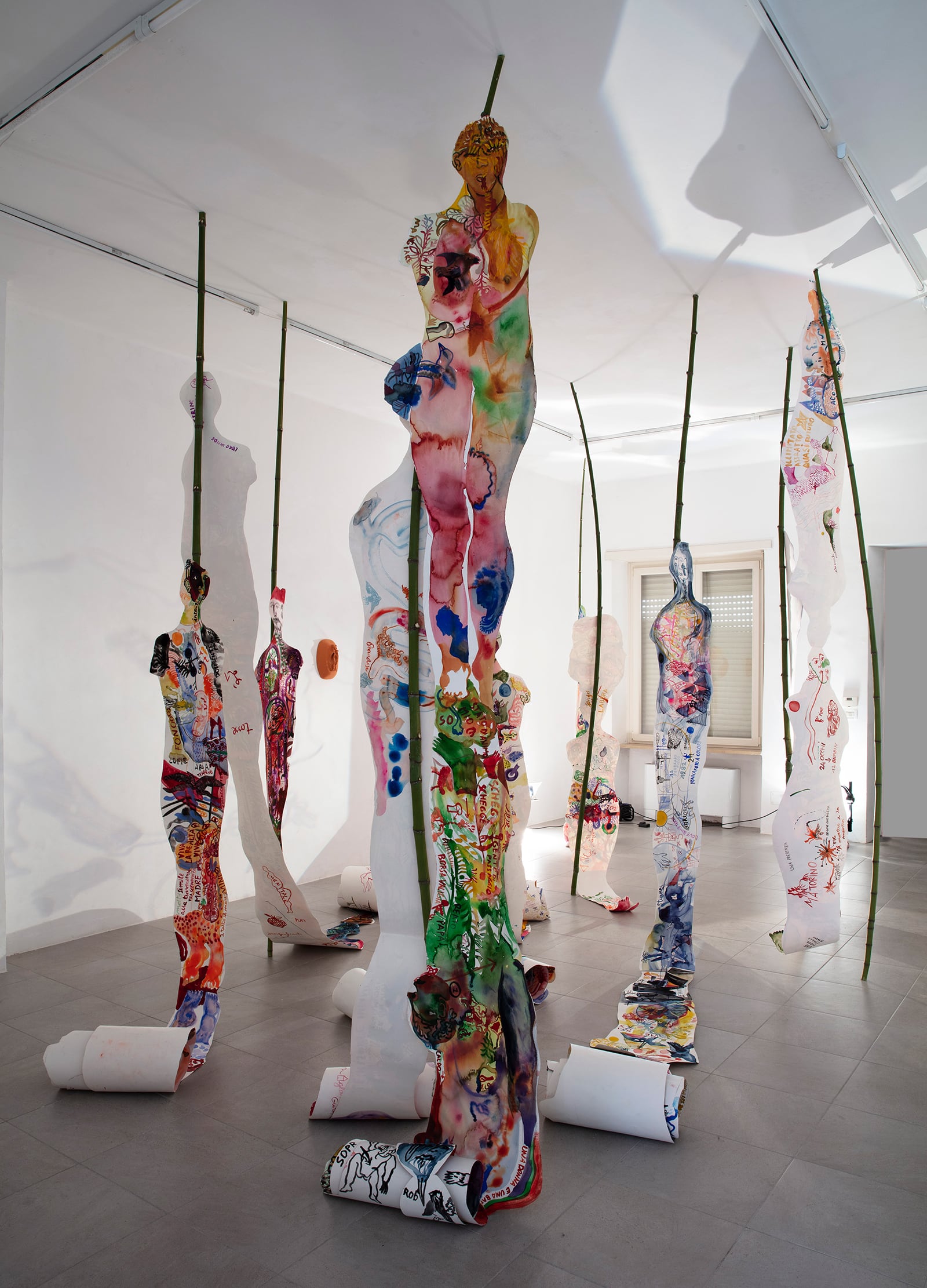 Installation view
Installation view
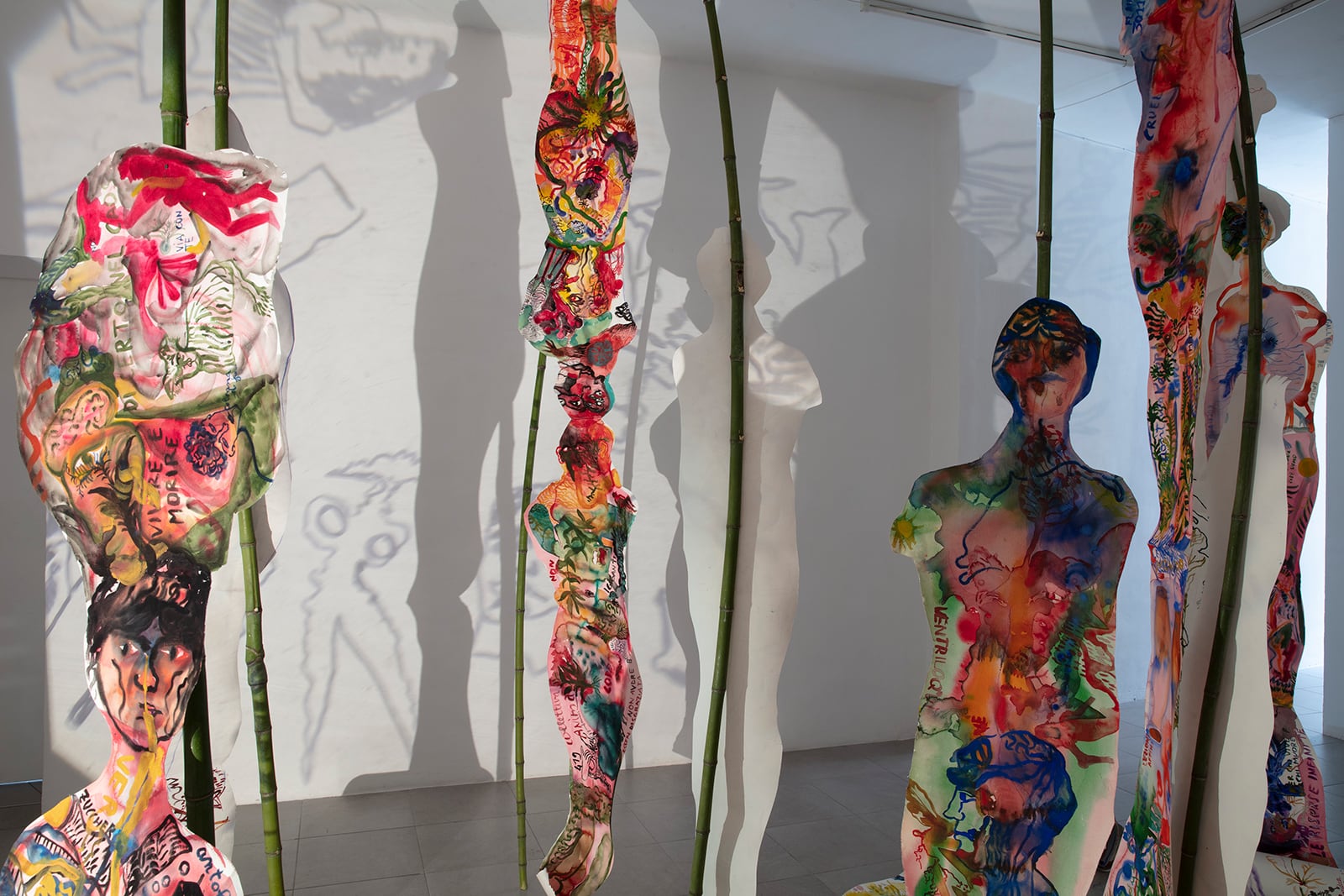 Installation view
Installation view
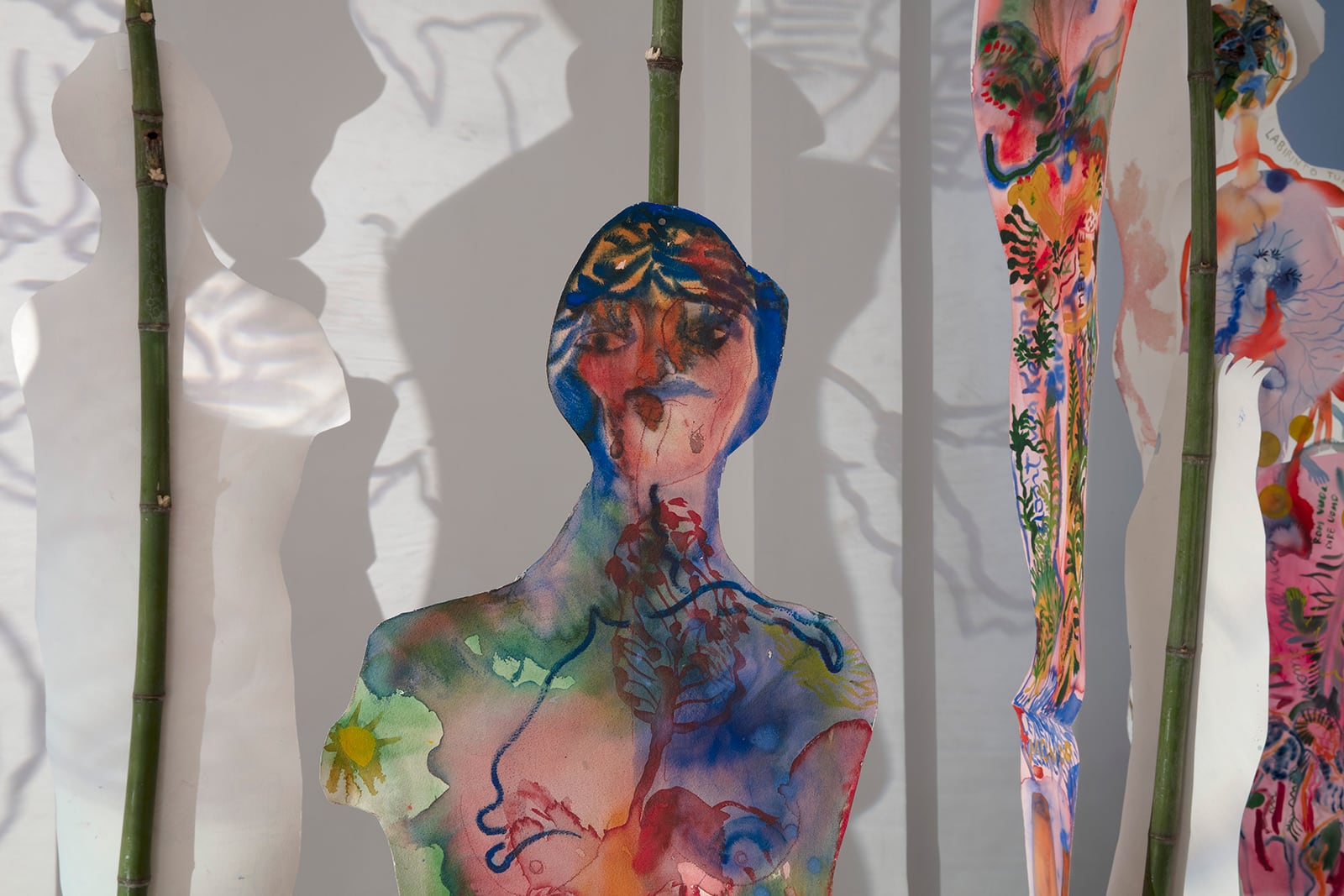 Malefate, 2022, ink, watercolor, pigments on cutout paper, bamboo canes. (Detail)
Malefate, 2022, ink, watercolor, pigments on cutout paper, bamboo canes. (Detail)
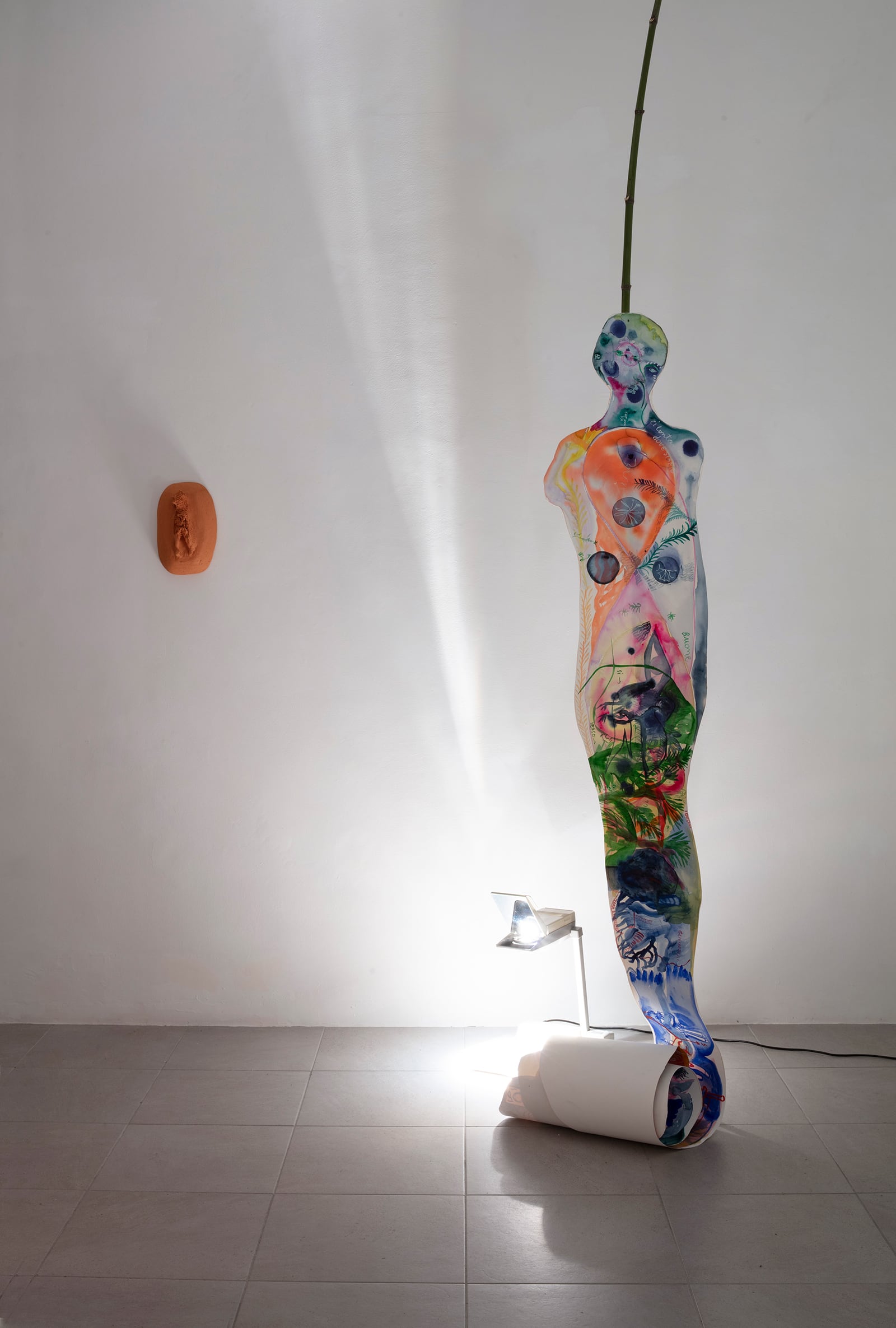 Installation view
Installation view
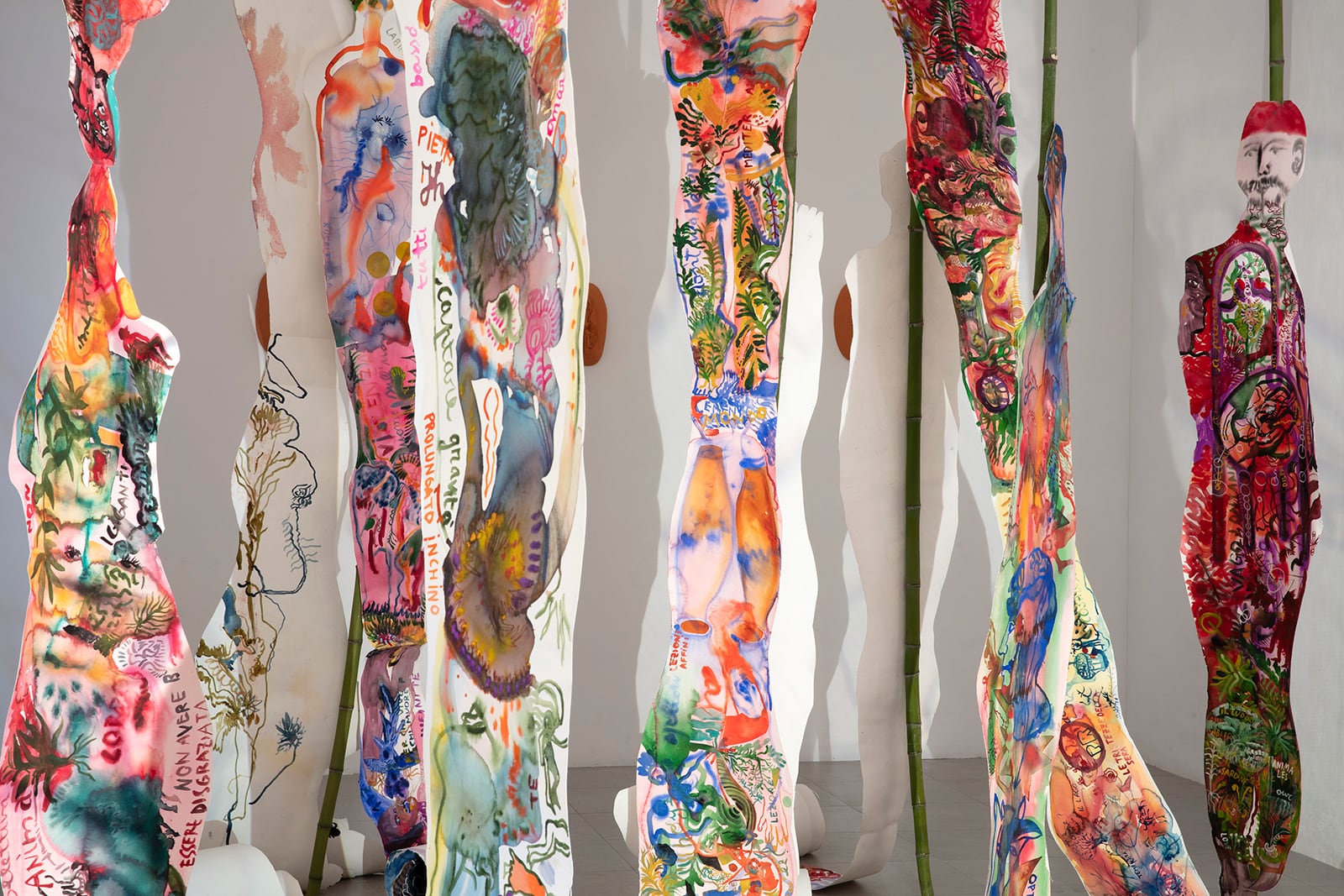 Installation view
Installation view
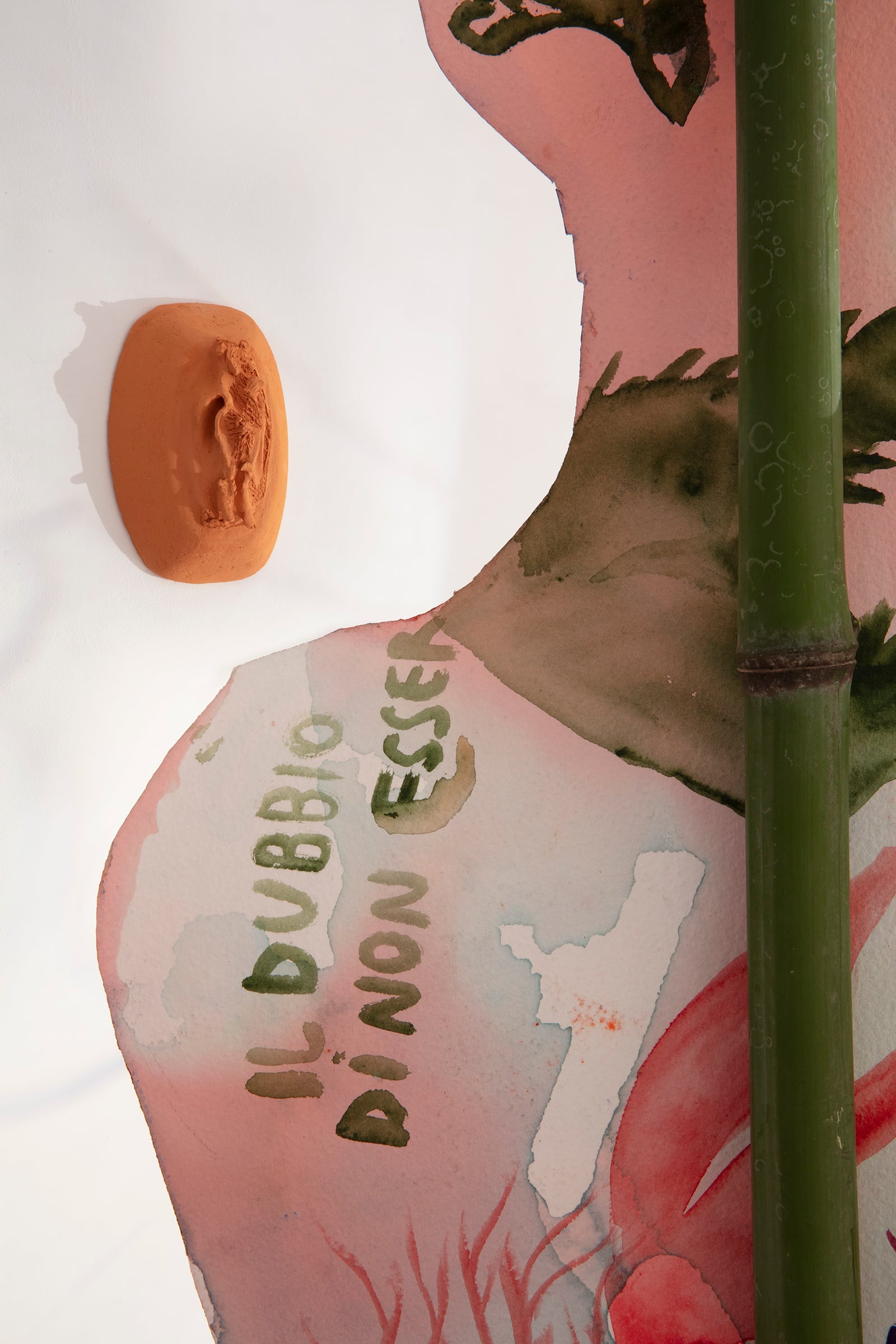 Installation view
Installation view
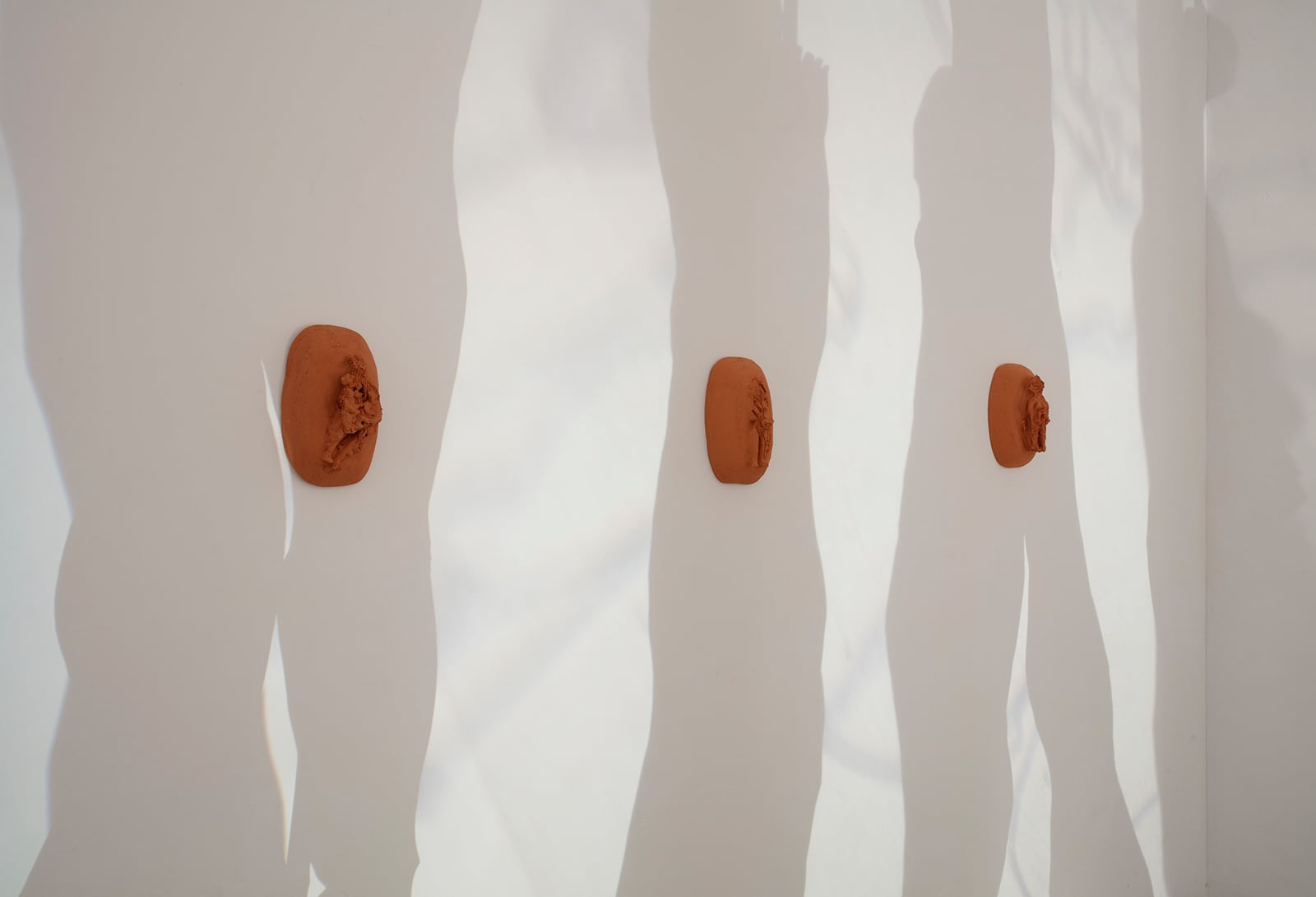 Malefate, 2022, terracotta, 20 x 30 cm
Malefate, 2022, terracotta, 20 x 30 cm
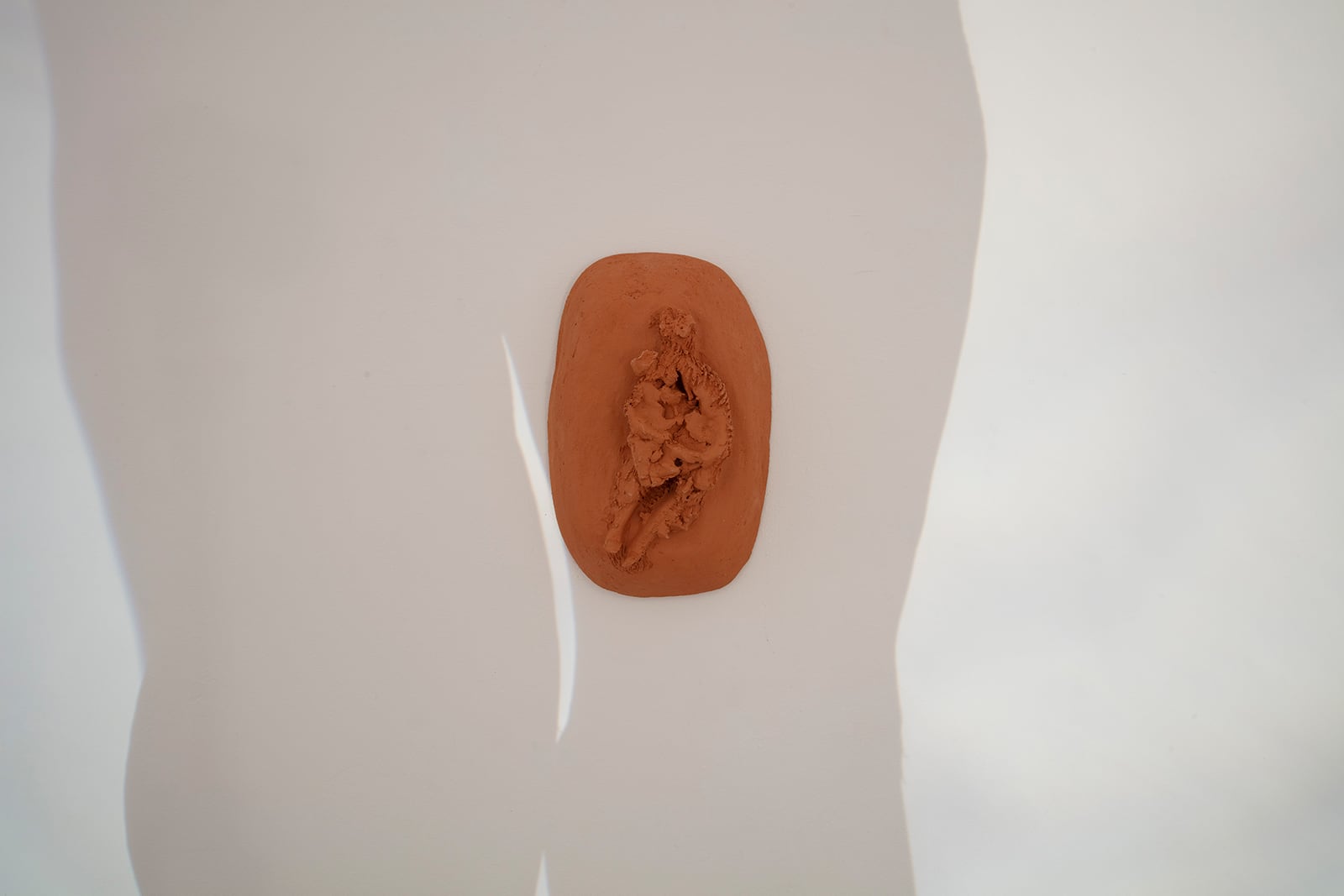 Malefate, 2022, terracotta, 20 x 30 cm
Malefate, 2022, terracotta, 20 x 30 cm
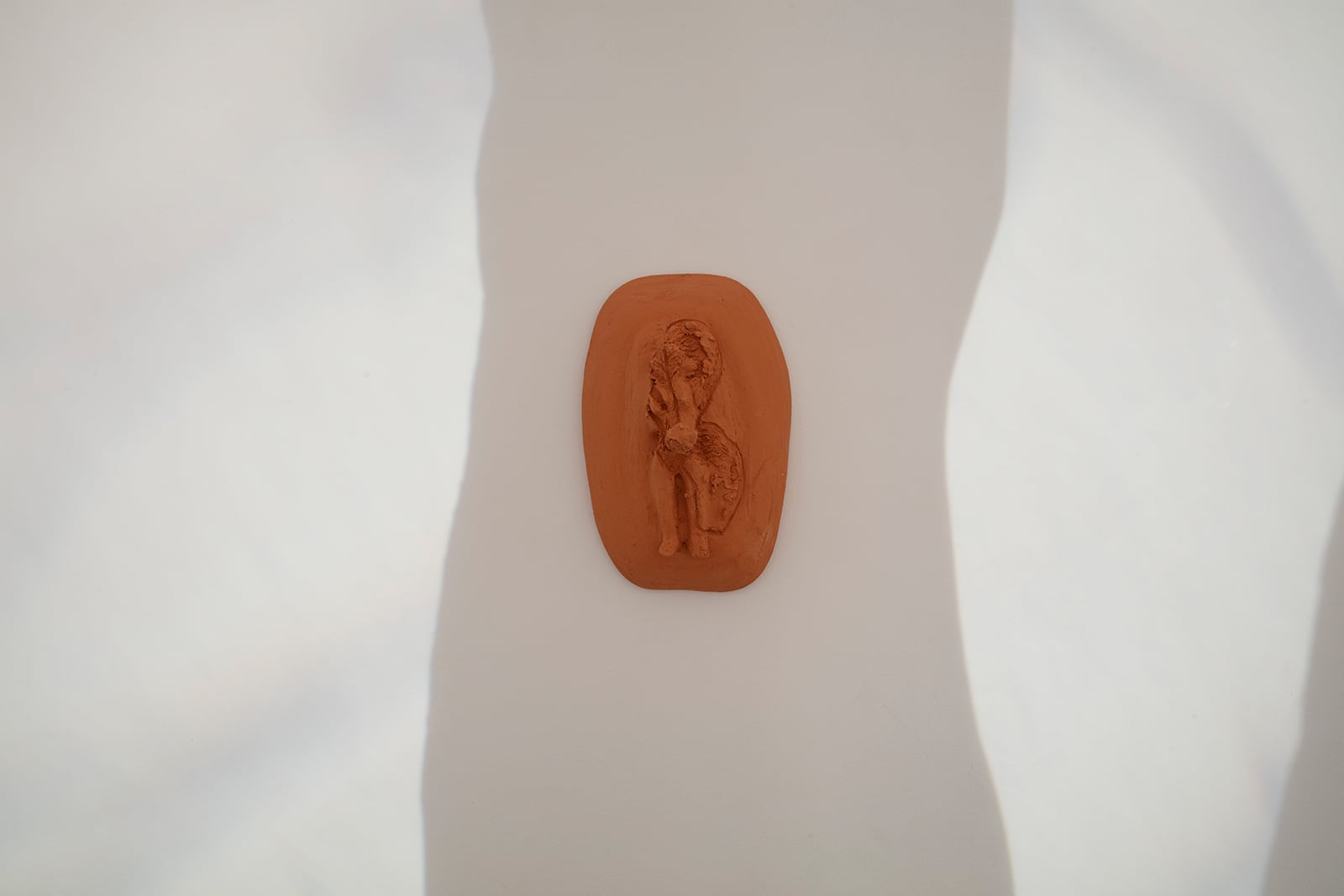 Malefate, 2022, terracotta, 20 x 30 cm
Malefate, 2022, terracotta, 20 x 30 cm
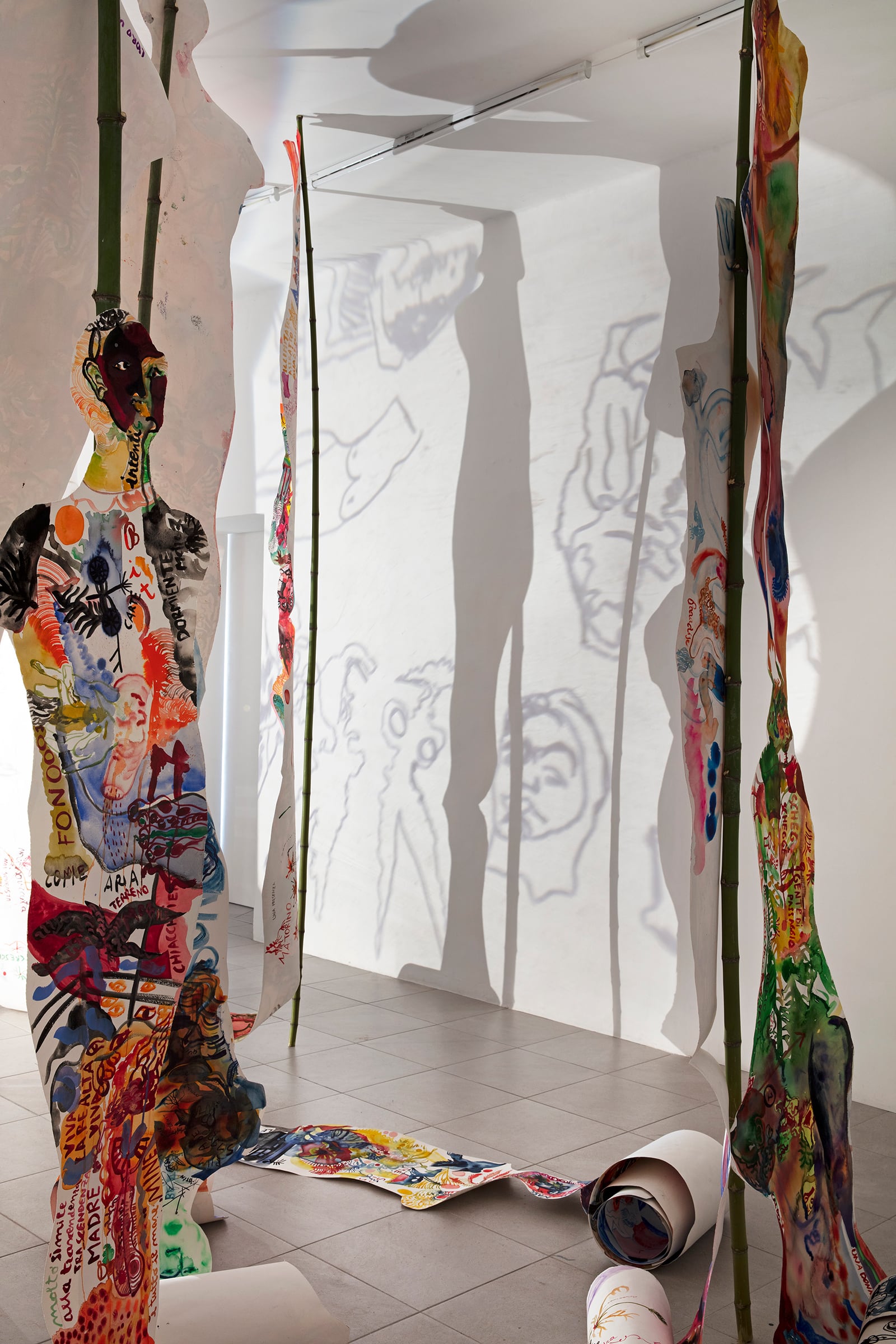 Installation view
Installation view
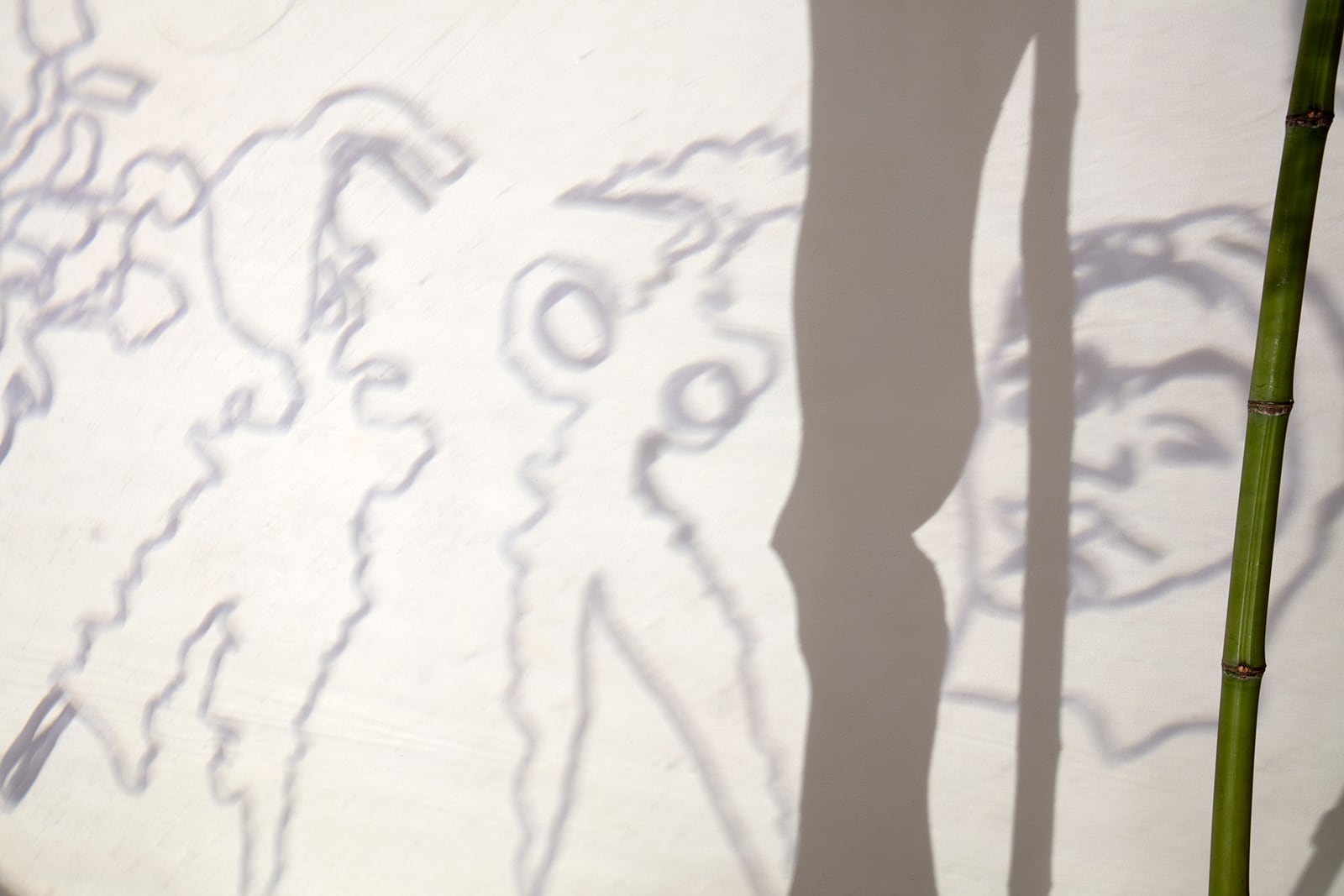 Malefate, 2022. (Detail)
Malefate, 2022. (Detail)
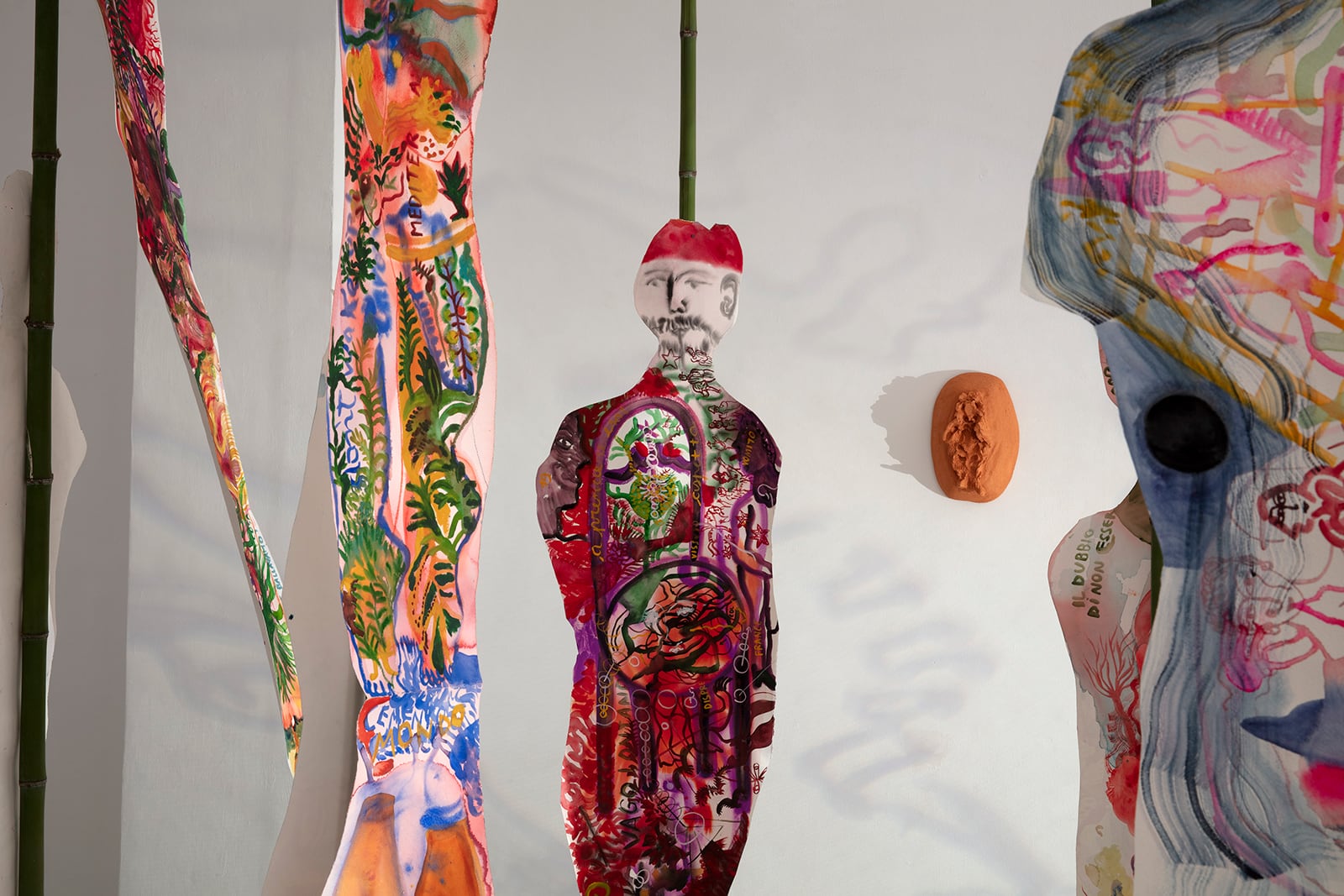 Installation view
Installation view
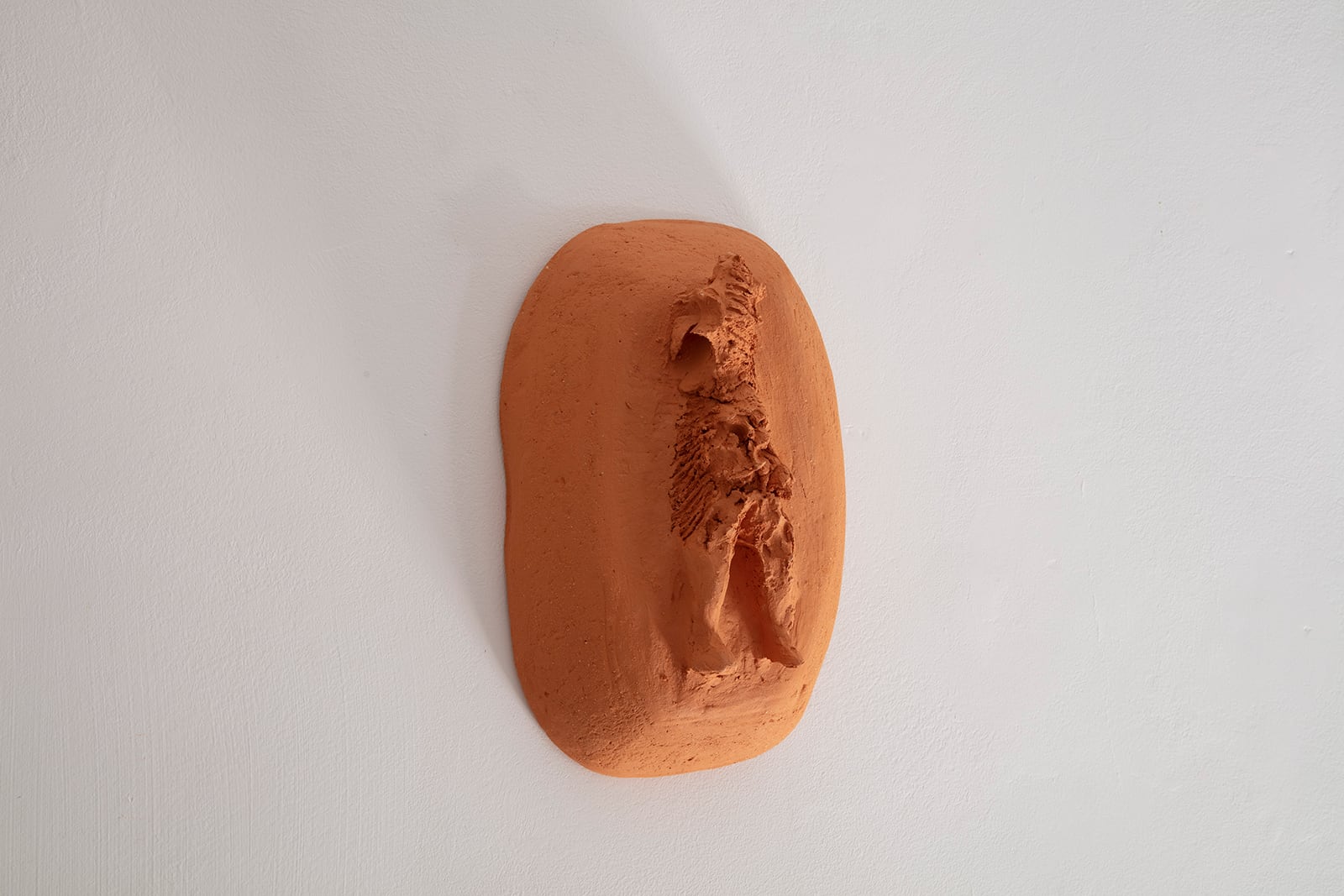 Malefate, 2022, terracotta, 20 x 30 cm
Malefate, 2022, terracotta, 20 x 30 cm
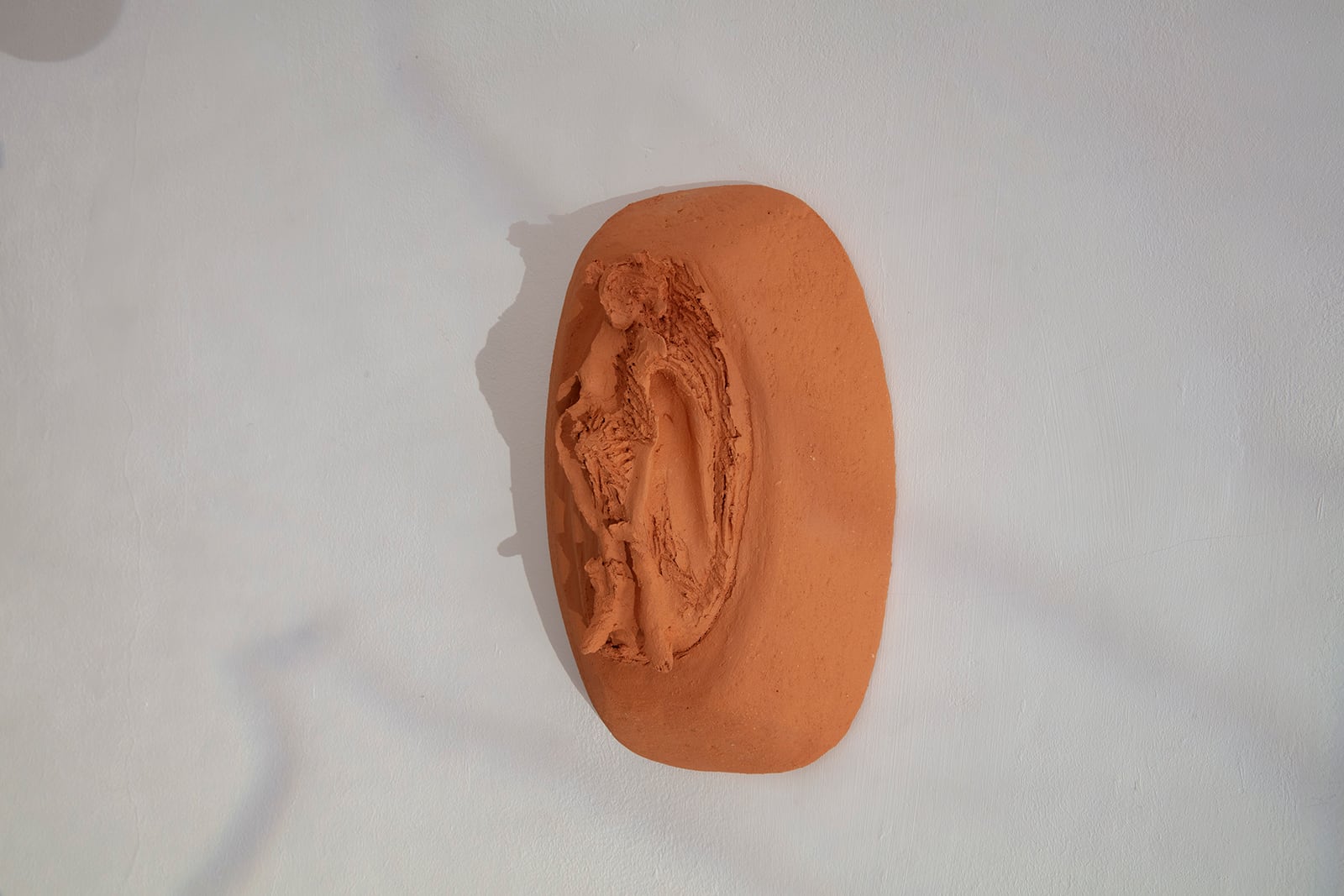 Malefate, 2022, terracotta, 20 x 30 cm
Malefate, 2022, terracotta, 20 x 30 cm
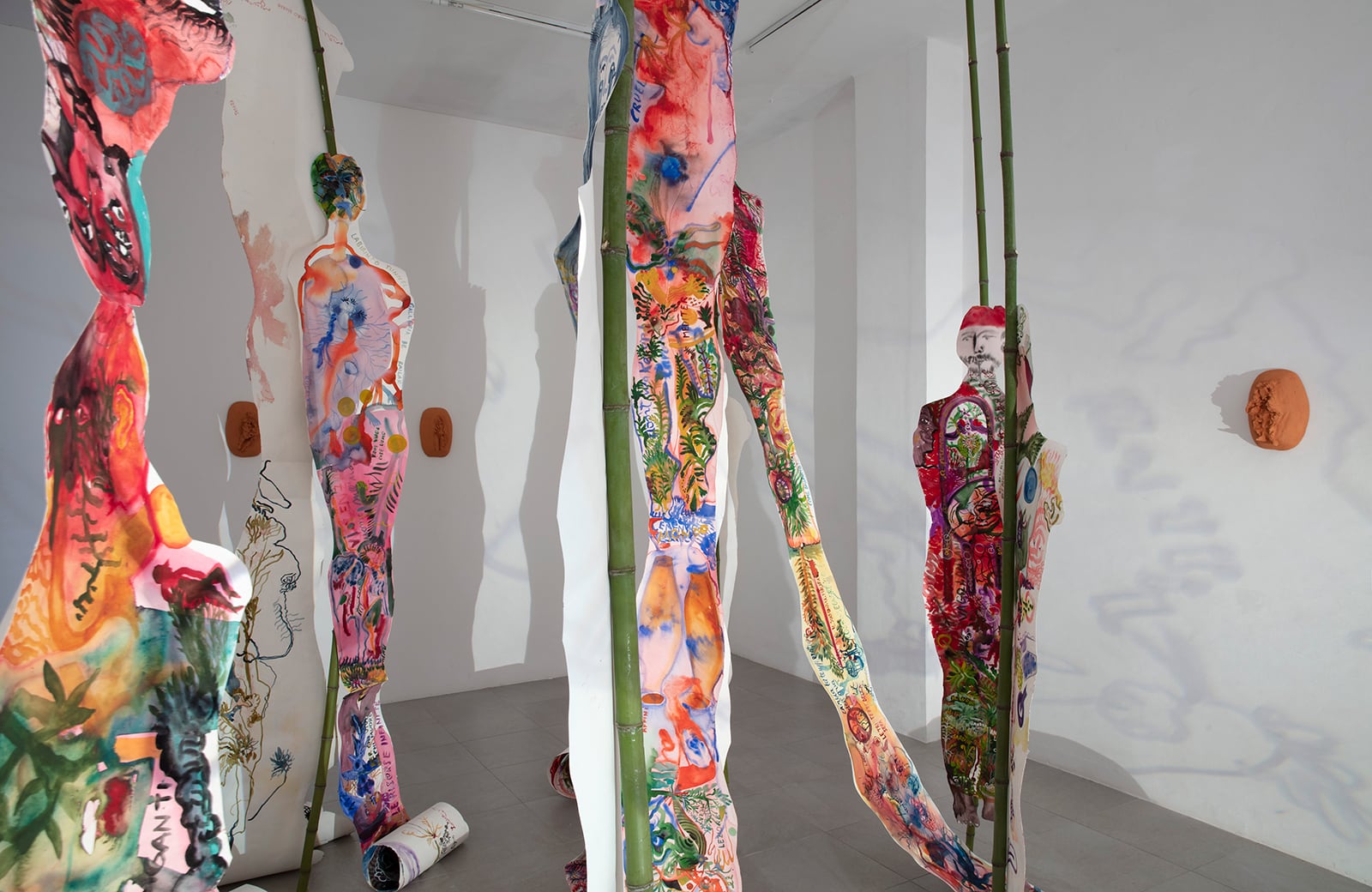 Installation view
Installation view
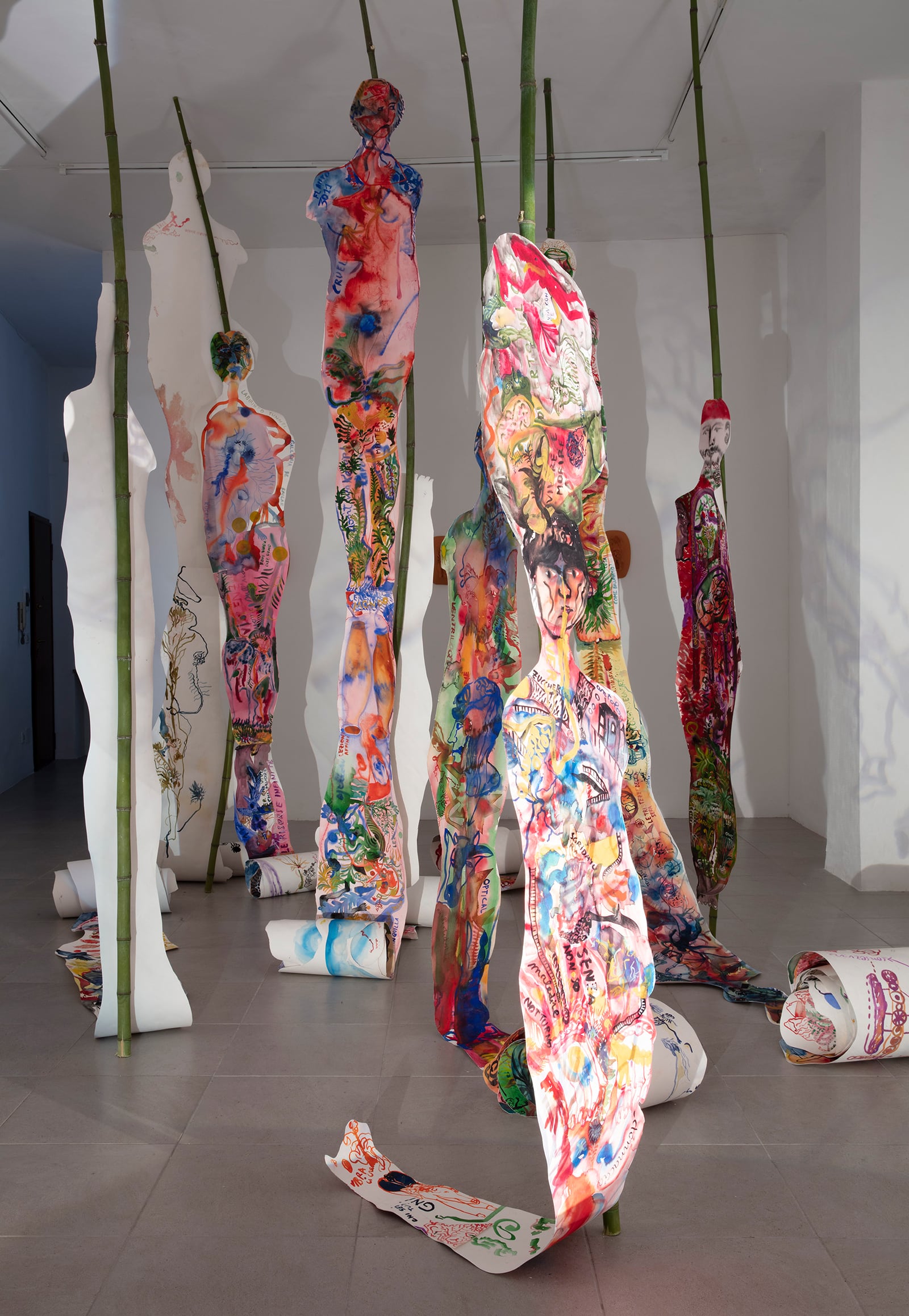 Installation view
Installation view
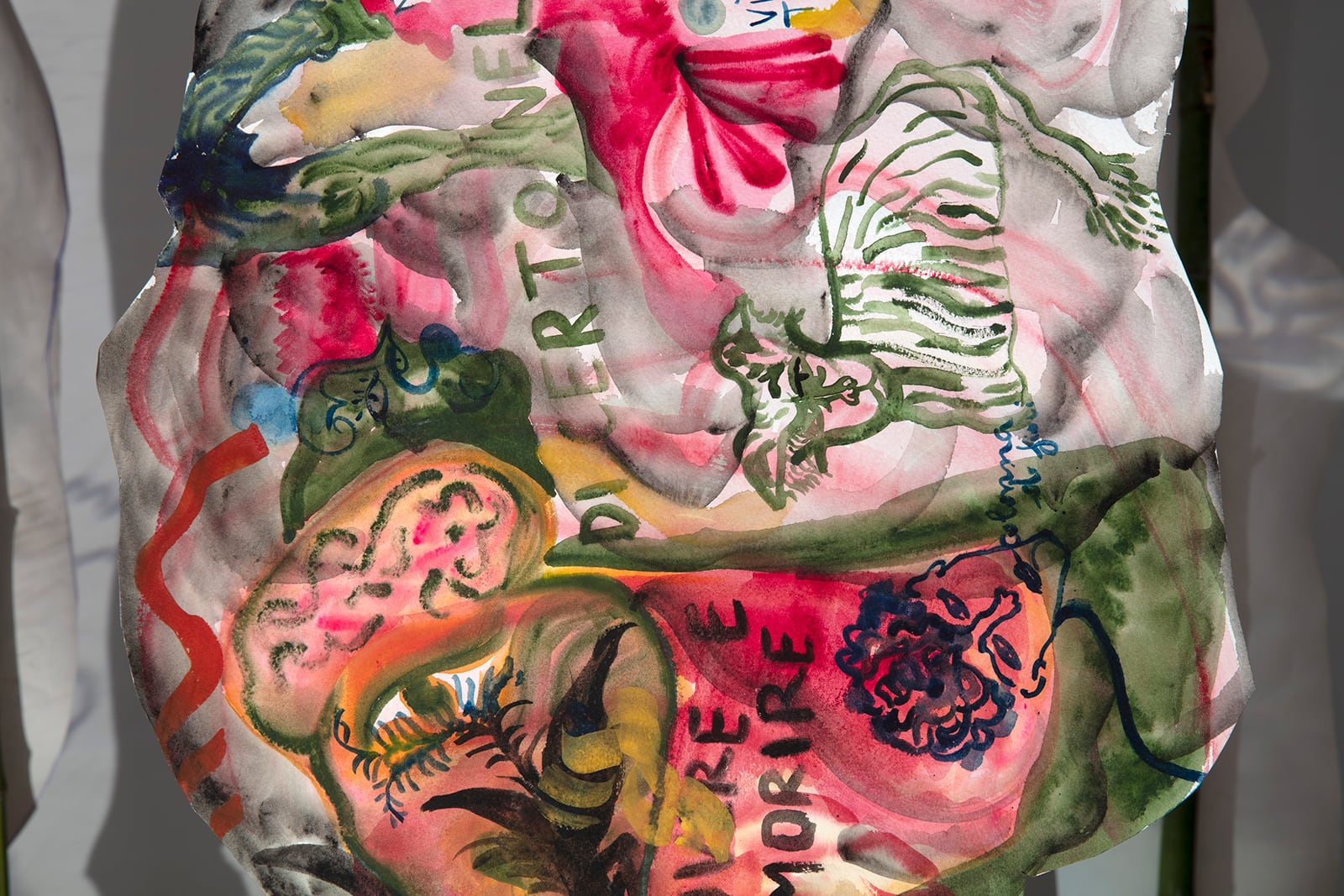 Malefate, 2022, ink, watercolor, pigments on cutout paper, bamboo canes. (Detail)
Malefate, 2022, ink, watercolor, pigments on cutout paper, bamboo canes. (Detail)
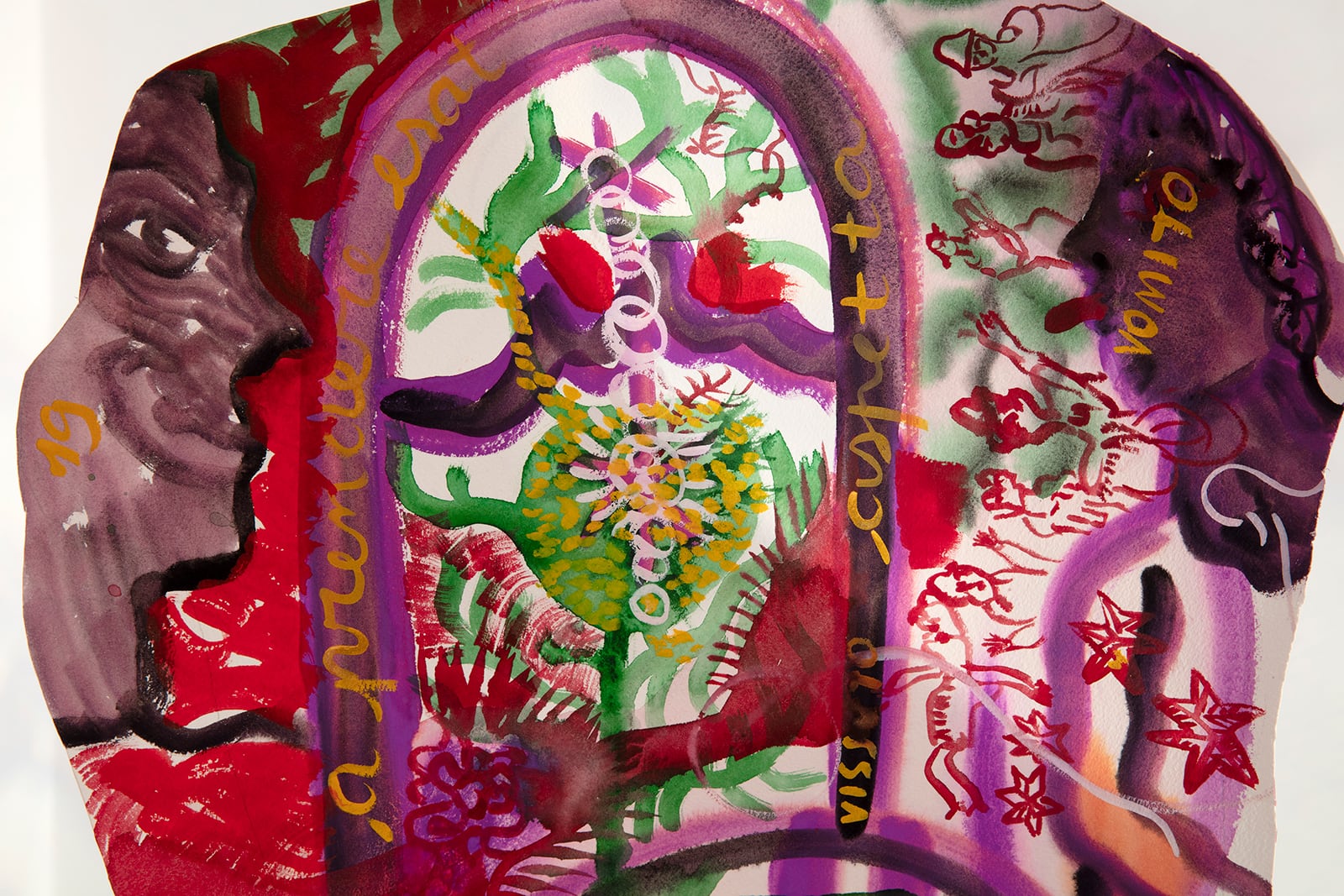 Malefate, 2022, ink, watercolor, pigments on cutout paper, bamboo canes. (Detail)
Malefate, 2022, ink, watercolor, pigments on cutout paper, bamboo canes. (Detail)
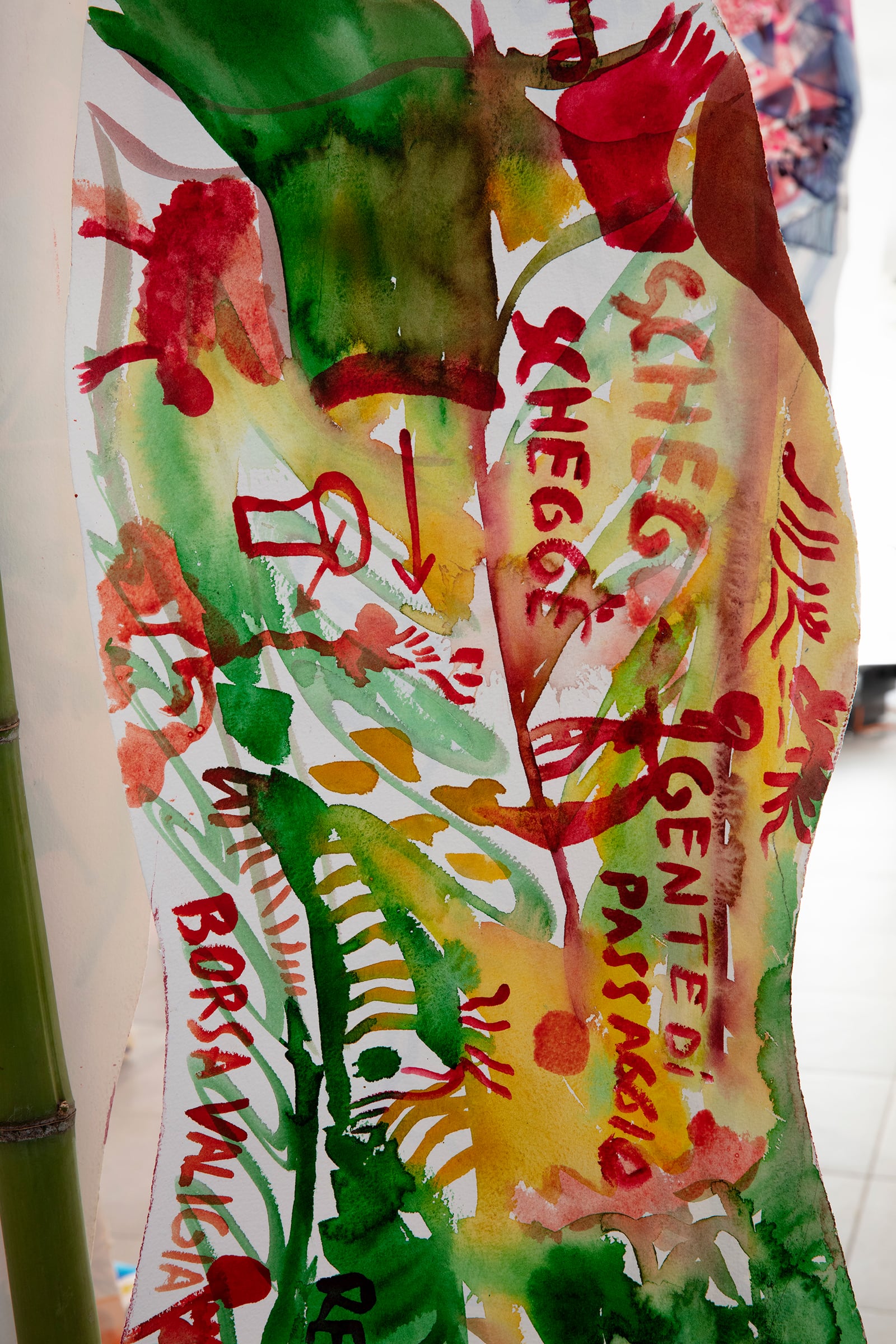 Malefate, 2022, ink, watercolor, pigments on cutout paper, bamboo canes. (Detail)
Malefate, 2022, ink, watercolor, pigments on cutout paper, bamboo canes. (Detail)
Alice Visentin's research investigates the imaginative power of orality and storytelling, exploring stories, songs and rituals that unite past and present. The passage of the word from body to body, from subject to subject, reflects archetypes, memories, traditions - collective and personal - which weave a complex, dense and universal plot.
Painting is used to trace and intertwine images that come from arcane stories, from the origins or from a simple, more silent and authentic everyday life chat or story.
This collection of images wants to follow the flow of life and give voice to a multiplicity of subjects, to approach the complexity of the world from singular perspectives and experiences, even at the margins, making their words resonate.
The place of these images is the body: not only for the necessary presence of an interlocutor so that our words would take on meaning, but also as origin and filter. Not surprisingly, the silhouettes that host the stories that Alice collected and interpreted are shaped from her own body. These paper supports with repeated forms, but with always different lines, remind us of the uniqueness and singularity underlying each collectivity.
Voices and stories of women are taken as main source, as “women have been seen historically, in many parts of the world, as the weavers of memory - those who keep alive the voices of the past, the histories of the communities, who transmit them to the future generations and, in so doing, create a collective identity and profound sense of cohesion. They are also the repositories of acquired knowledge and wisdom regarding medical remedies, sentimental problems and the understanding of human behavior, starting with that of men.” (1)
The stories intertwine in a forest of bodies and narratives that overlap, join and continue in other profiles and new configurations projected on the walls with a play of light and shadow.
Waiting for them, fixed as religious icons or simple copper pans hung in the kitchen, there are a series of earthenware lids: they are the “malefate” of the exhibition title.
It was said that the malefate were small female figures who whispered the destinies to newborn children appointing their fate for better or for worse. They loved to dress in red and, on gold looms, wove splendid fabrics that they spread on the fields in the moonlight. These presences seem to appear from the terracotta, reminding us of other female myths of the origins that address the inevitable coexistence of good and evil. Also in this case, as for the curious Pandora, the containers are open. Only the lids remain. The intertwining stories that emerged have now animated the room.
For the malefate the spoken word is the means to weave a destiny on a person; whispering their story determines their future, drawing the path that will guide them in life. It is no coincidence that in Piedmontese the ‘desmentioura’ is the woman who practices the ‘smentía’, the magical ritual. The word comes from 'desmetié', to forget. When the spell is done, the trace of the narration is lost, forgotten.
The thread of history and time also comes back in the characters of the Moirai of ancient Greece: other skilled female weavers and daughters of the night who have the task of weaving everyone's fate, unfolding it and finally cutting it off, marking its end.
This recurring role of the word and of the narrative thread entrusted to female figures who intertwine it and determine the complexity of the human condition is what Alice researches in Malefate.
“A magical thread seemed to tie the women, giving them a composed and ardent excitement. The row began to bend, slowly forming a circle: from time to time a woman advanced, detached two joined hands, intertwined them with hers, increased the black and red garland behind which the fringe of shadows moved. And the feet rose faster and faster, beating over each other, beating the earth as if to awaken it from its stillness." (2)
(1) Silvia Federici, Witches, Witch-Hunting and Women
(2) Grazia Deledda, Canne al vento